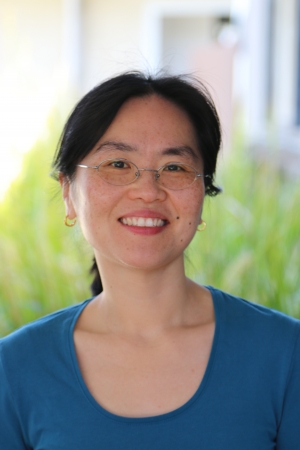Stem cell growth - in the bag
Research news
A cell culture device developed by Deakin researchers is set to offer new hope to patients with leukaemia and other blood diseases, who are in need of “lifesaving” stem cell transplants.
The researchers have developed a “closed system” culture device for expanding blood stem cells - obtained from umbilical cord blood - that will increase the quantity of stem cells available for transplants.
Currently, a common source of blood stem cell transplant is the bone marrow. However, a successful bone marrow transplant requires a highly genetically matched sample to avoid complications, such as Graft versus Host Disease, where the new stem cells attack the patients’ own cells.
The advantage of using umbilical cord blood as a source for blood stem cell transplants is that the requirement for matching cord blood samples is less stringent and cord blood samples produce a lower incidence of Graft versus Host Disease.
The researchers, from Deakin’s Institute for Frontier Materials (IFM), have been working in collaboration with the Geelong biotechnology company, Cytomatrix Pty Ltd and the Monash Institute of Medical Research (MIMR).
At Deakin, the project has involved two teams of IFM researchers, one focussing on cell biology and the other working on developing the polymer materials that support the growth culture.
Senior Research Fellow Dr Cynthia Wong, who co-ordinated the biology effort, said that the new culture device could be available within one to two years, and cell products will be manufactured for clinical trials using the device shortly after that. Cytomatrix are currently raising funds to make this a reality.
The new device allows the development of an “off the shelf” product that will by-pass much of the need for tissue type-matching and will be used to improve outcomes for transplant recipients. While some matched stem cells will still be needed, the device will provide the “booster” quantity of stem cells needed for adult stem cell transplants.
Dr Wong explained that less than 0.1% of umbilical cord blood contains stem cells that can be used for stem cell therapy.
“One of the most important aspects of our research is that we have devised a way to expand the number of suitable stem cells substantially in only an eight-day incubation period,” she said.
“We have been working at small scale, but, now we have the know-how, it is just a matter of getting the systems in place for scaling up.”
Dr Wong added that researchers around the world have been working on growing stem cells - and the “closed system” culture device is an important breakthrough, requiring less labour, less space and less sterile laboratory environments.
“Our system has the potential to replace fifty large tissue culture flasks with one device the size of an A5 paper. It is cheaper, more efficient and should be much more attractive to commercial operators,” she said.
Associate Professor Mark Kirkland, Chief Scientific Officer at Cytomatrix and Team Leader in Biomaterials at the IFM, said that an important benefit of the research will be that it will help to reduce the transplant recovery time from from 26 to 16 days.
“This faster recovery time will definitely lead to improved survival rates because around 20 per cent of transplant recipients die within the first month as a result of fatal infections,” Associate Professor Kirkland said.
He cautioned, however, that, once begun, clinical trials will take up to five years, so it will be some years before patients are able to benefit from the new research.
Leukaemia is cancer of the white blood cells, which begins in the bone marrow. Each year, over 2,500 new cases are diagnosed in Australia. Stem cell transplants are increasingly being used as a treatment for all types of leukaemia, as well as around 80 other diseases such as inherited immune disorders, like sickle cell anaemia and various malignancies.
“Currently, over 1000 stem cell transplants are carried out in Australia each year,” said Associate Professor Kirkland. “Cord blood is an increasingly important source of stem cells for these transplants, but the limited number of stem cells in cord blood limits its use in adults. Being able to generate more stem cells from cord blood in the laboratory has the potential to make this important treatment option available for everyone.”
Share this story
 Dr Cynthia Wong.
Dr Cynthia Wong.
